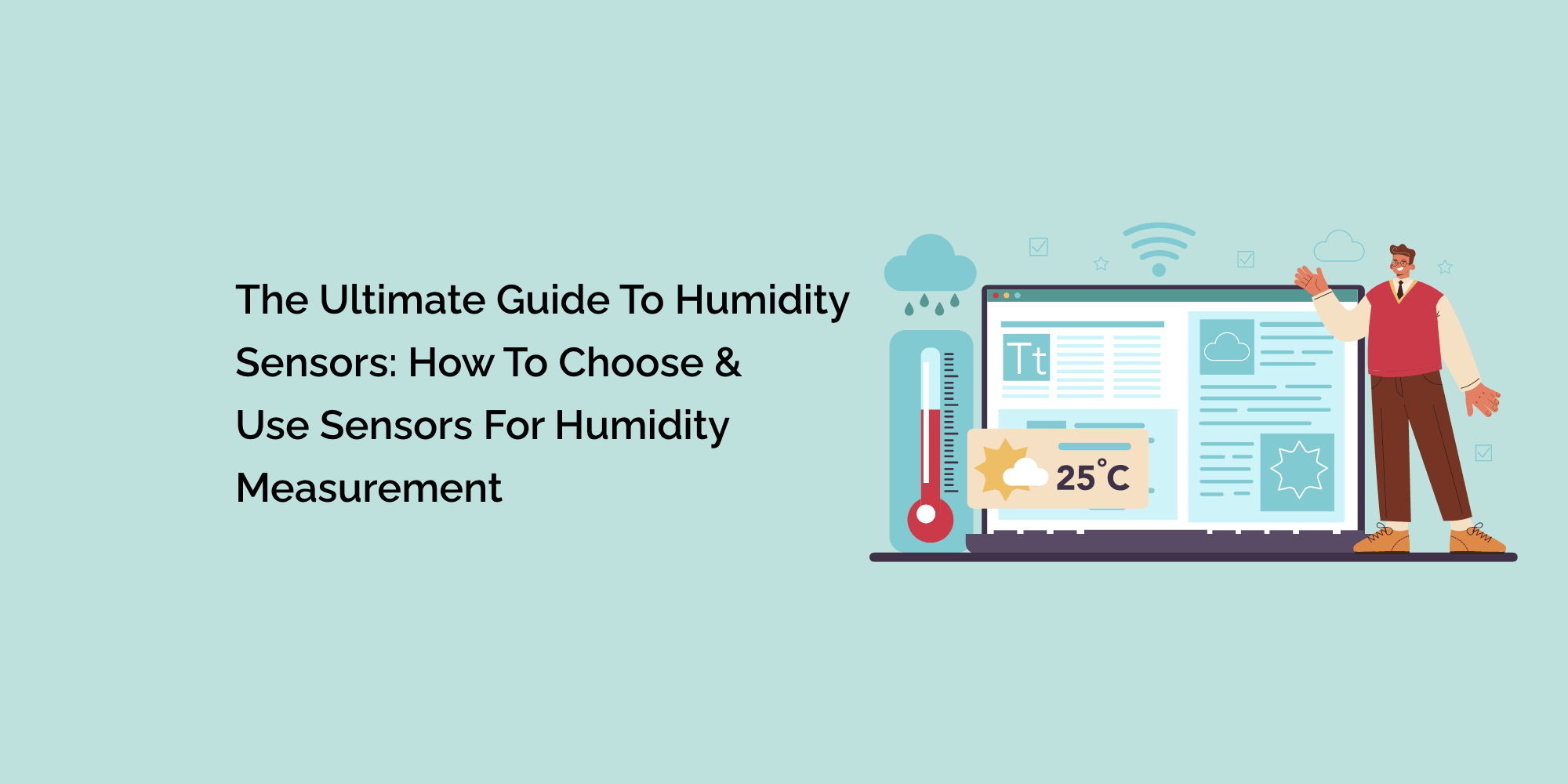Monitoring relative humidity is critical for health, safety, and protecting property. The first step to effective humidity control is accurate measurement using the right humidity sensors for your needs. With various options available, it can be difficult to determine the best sensor technology and placement for your requirements. This guide provides an overview of the types of humidity sensors, recommendations for applications, and tips for optimal use.
Types of Humidity Sensors
There are three primary types of humidity sensors:
•Capacitive sensors use a hygroscopic dielectric material that absorbs or releases water vapor, altering the capacitance. They are very accurate but more expensive. Good for tight control environments like museums.
•Resistive or Resistance sensors contain moisture-sensitive chips with electrodes that change resistance based on water vapor levels. Often cheaper but can lose accuracy over time. Best for basic control.
•Thermal conductivity sensors pass air over a heated sensor. The rate of thermal conductivity depends on the humidity level and temperature. They are fast-reacting and long-lasting but often the least accurate. Well-suited for humidity monitoring in uncontrolled environments.
Choosing Sensors for Specific Uses
•Residential: Basic resistance or thermal conductivity sensors are affordable options for whole-home humidity measurement and control. They provide adequate accuracy for comfort.
•Commercial Buildings: More advanced capacitive or resistance sensors are better options, as humidity control requirements are more precise. They also allow for zoned monitoring and control.
•Industrial: Tight tolerance capacitive sensors, chilled mirror hygrometers or other high-accuracy sensors are necessary for humidity measurement in applications like aerospace, medical device manufacturing or research labs.
•Agricultural: For applications like greenhouses, grain silos or plant growth chambers, a combination of highly accurate capacitive sensors and basic thermal conductivity or resistance sensors provides both precision measurement and wide area monitoring.
Sensor Placement and Usage
For the most accurate measurement, place sensors in areas that experience average humidity levels for the space. Avoid corners, drafty or stagnant locations. Consider:
•Mount sensors on interior walls at shoulder height for the best representation of the average humidity experienced by occupants or workers.
•Use multiple sensors at different locations in large spaces. The dimensions and building materials in some spaces can create microclimates that vary in humidity. Multiple sensors allow determining the actual average humidity across the whole area.
•For critical areas like museums, server rooms or research labs, install sensors at multiple heights as humidity levels can change at different levels from floor to ceiling.
•Outdoor sensors should be installed under the eaves or other weather-protected areas if measuring ambient outdoor humidity. Place them as close to air intake vents as possible if measuring intake air for HVAC systems.
•Remote monitoring using WiFi-connected or smart sensors allows 24/7 visibility into humidity levels from mobile devices anywhere. Alerts can also automatically warn when humidity is too high or too low before damage occurs. These options are good for unattended sites or areas and provide an early warning system for property managers and owners.
•Calibrate sensors at least once a year or per the manufacturer's recommendations to ensure the highest accuracy. Recalibrate sooner if sensor readings seem incorrect or humidity control issues arise.
Using the proper humidity sensors and placing them strategically in your space provides the accurate and actionable data needed to effectively monitor humidity levels and control indoor environmental conditions. Continuous feedback on relative humidity, especially in facilities housing valuables like electronic equipment, art collections or medical supplies, gives owners and operators better oversight and early warnings to prevent issues from excessively high or low humidity before significant damage results.
Overall, investing in a quality humidity measurement system reduces costs from the potential risks of uncontrolled humidity like mold growth, equipment failure or unsafe product storage. By starting with the fundamentals, this guide helps you determine the best humidity sensors for your needs.
Conclusion
Humidity measurement and control are essential for health, safety, productivity, and protecting property and inventory. The first critical step is deploying an effective humidity monitoring system built on the proper sensors for your application and budget.
Whether you need precision accuracy for tight tolerance environments or basic measurement for more causal needs, there are humidity sensor options to suit requirements and constraints. By understanding sensor types like capacitive, resistive and thermal conductivity as well as recommendations for residential, commercial and industrial uses, you can choose those best aligned with your needs. Strategic sensor placement at multiple heights or areas in large spaces provides the data detail needed for highly localized or wide-range measurement.
While technology expands the possibilities for advanced wireless monitoring, control, and automation, the fundamentals of humidity measurement remain foundational. High-quality sensors, proper installation, calibration, and maintenance are required for a monitoring system that delivers the accurate real-time visibility and reliability demanded to protect human activities, processes, and property.
With experts predicting rapid growth in humidity sensor and control systems fueled by cost reductions, technology ecosystem expansions, and demand for automation across segments, the time for organizations and individuals to invest in moisture monitoring has never been greater. By gaining a clear understanding of humidity sensors and how to select and deploy them effectively, you put the right tools and safeguards in place to gain oversight and peace of mind that your environment is optimized, damage risks are minimized, and productivity or operations are maximized.
Measure, monitor and control: the keys to a stable, sustainable, and efficient environment are in your hands. Or more accurately, at your fingertips...through the data and insights provided by the right humidity sensors.








